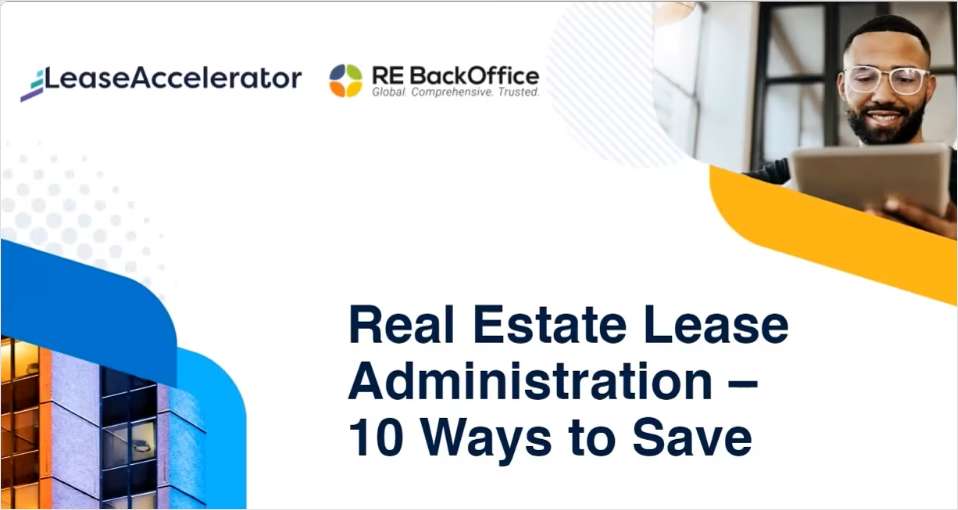
Kearny Real Estate Co. of Los Angeles and its joint venture partner, TriGate Capital of Dallas, recently acquired a vacant 74,000-square-foot flex! research and development building in the Rancho Bernardo submarket of San Diego. That purchase is a prime example of why commercial real estate observers say that short sales in a growing number of cases represent the preferred way out of a distressed asset for buyers, borrowers and lenders. Kearny paid $6.8 million for the 74,000-squarefoot R&D building, according to partner John Bragg, who notes that the building sold for $11 million in 2006. The purchase price represented 68% of the outstanding loan balance, and the new owners plan to invest $1.8 million immediately to renovate and reposition the property, with reserves set aside for future tenant improvements.
To Kearny, the deal represented "an opportunity to acquire a well-located, quality asset at a very attractive price ," according to company vice president Jason Rosin. He says the property is in a submarket that "has bottomed out and should be one of the first to recover when the economy begins to improve."
For both the borrower and the lender, the short sale represented a way out of what could have been a much more protracted solution if the asset went into foreclosure. That, according to experts on distressed assets, is one reason that short sales are gaining popularity and the pace of such deals is accelerating. If the lender and the borrower can come to an agreement on who is covering the deficiency on a short sale, "then the short sale can be pretty quick ," says Hampton Beebe, senior vice president of Boca Raton-based ARA Florida. ARA recently represented Prestige Builders Group, the former owner of272 condo units in the Olivine at the Township Condominiums in Coconut Creek, FL when Forest Properties Management of Newton, MA bought the condos in a short sale.
Forest paid $22.5 million, or just under $83,000 per unit, compared with the average sales price of $227,415 per unit that the previous owner garnered before discontinuing condo sales in late 2007. The Massachusetts company bought the units from a consortium of lenders led by KeyBank, which had filed a foreclosure lawsuit against the legal entity that owned the complex. Beebe says he doesn't know the exact amount that Prestige owed, but he believes it was not more than $30 million.
In the cases of both Kearny and Forest Properties, the buyers were able to acquire the assets because the lender agreed to a short sale. That mutual agreement is no small point because, as managing director Daniel Lisser of the New York City office of Johnson Capital points out, "Once the borrower has agreed to give up the property, it is the lender who is controlling the transaction" and determines whether to work out the distressed property via short sale, foreclosure or other means. Yet Lisser says that on the workouts with which he has been involved, the short sale has never been an option that was considered by either party. He adds: "I would expect that they would become more common because a short sale is almost a free option for the lender, since they can put in a reserve price to test the market."
He explains that a lender who goes the short-sale route and doesn't like the bids still has the option of foreclosure. He also sees short sales as "probably more likely to occur in markets where lenders can estimate the sales price on a fairly reliable basis." Secondary and tertiary markets, where there are few sales to establish values, are problematic, he says.
In addition, Lisser points out that lenders are more inclined toward short sales of properties that are well tenanted. "If the building is empty or under-occupied, it makes sense for the lender to take title, lease it up and then sell it versus trying to sell an empty building ," he says.
Another potential benefit for a short sale transaction, at least for the lender, is that the property may be sold for a higher price if it is not viewed as a distressed asset, says Steve Lurie, a partner with Los Angeles-based law firm Greenberg Glusker. Additionally, he points out that a short sale avoids the time and expense involved in a foreclosure. A non-judicial foreclosure takes at least four months to complete, he says. "A benefit to the borrower of a short-sale transaction is that the borrower will not have a foreclosure
or deed-in-lieu transaction as part of its credit history, which should make
it easier to borrow in the future." Short sales raise income tax issues regarding cancellation of indebtedness, but so do foreclosures because both are taxed under the same rules.
Whether a lender is more inclined to pursue a short sale or a foreclosure depends on a list of pros and cons that can vary according to the specific property. An important issue from the lender's point of view is that completing a foreclosure sale extinguishes any liens on the property, whereas a short sale or a deed-in-lieu will not, Lisser points out.
Beebe notes that the negotiations for the Olivine condominiums involved three different lenders, the former owners and the buyer. With many borrowers facing the real threat of foreclosure, many more like the borrowers and lenders in the Kearny and Forest Properties deals are looking for ways to avoid it. And although there are still negative ramifications associated with the short-sale option, for distressed borrowers, they are less damaging than the foreclosure or bankruptcy alternative.
"Short sales are typically preferred when all parties are cooperating with each other ," says Beebe. "If a lender has a cooperating borrower, then a short sale can be a faster and less expensive than filing foreclosure and going through the court system." Beebe points out that foreclosures can take a year or more, but a short sale could take just a few months or less if all parties agree to the sale. He adds that legal fees and court costs can really add up in foreclosure.
The difference in many cases, according to Beebe, is whether the loan is recourse or non-recourse. If the loan is recourse, the borrower and the lender have to agree on how to handle the difference between the purchase price and the loan amount, known as the deficiency, he says. The deficiency on a recourse loan is be negotiated between both parties.
"They have to come to agreement on what percentage of the deficiency each will be responsible for ," Beebe explains. "If they can agree on who is covering the deficiency, the short sale can be pretty quick. If the loan is non- recourse then the borrower can just walk away." He adds that foreclosure is typically necessary when the borrower and lender disagree on the best course of action.
This level of agreement, according to Lisser, means that, "From an image point of view, a short sale appears to be a more controlled and friendlier transaction to the public." On the other hand, a foreclosure, even a friendly one, "just sends a bad message out to the market ," he says. Short sales appear less negative because the borrower is more visible and seems more in control. However, from the lender's point of view, "A big concern on the short sale is that the property is selling at market price and the borrower is not working with a buyer to sell it below market ," Lisser says. The lender usually insists on hiring the sales broker, who then has a fiduciary responsibility to the lender.
For the distressed borrower, the biggest benefit of a short sale is the borrower's release of the debt obligation, according to Marty Higgins, a senior investment advisor at Hendricks & Partners' San Francisco office. "They also avoid a foreclosure on their credit report and retain some aspect of control in a short sale ," Higgins says.
The short sales that Higgins has done have actually been driven by the lender. He points out that for a number of reasons, a lender may not want to foreclose primarily to avoid exposure in owning an asset post-foreclosure. Lenders are also cooperating more on the short-sale process. According to Higgins, the reason for an increase in cooperation is that "the inventory is increasing and lenders may be under greater scrutiny from the FDIC to unload toxic assets from the balance sheets faster." He adds that "Banks are also realizing that they can avoid liability with a short sale and, in a lot of cases, may end up receiving the same net figure as if they took the asset and sold it on the open market."
Two recent short sales that Higgins closed took place for different reasons. One was related to a conduit loan that the lender originated. He explains that it made more sense for their investors to short the property and essentially re-write the conditions of their existing note with a new borrower. The other situation involved an asset that was acquired from a failed bank. "The acquiring bank had approval for a short sale from the FDIC, allowing it to exit much quicker than going through the foreclosure process."
Such quick exits are a chief concern of lenders, according to Lisser. "The key issues are speed and getting control of the property as fast as possible," he says. "Lenders fear that the longer a borrower with no equity is in control of a property, the worse condition it will be in once they obtain control, as the borrower has no incentive to spend money on maintenance and tenant retention." In addition, a property with a weak owner/ borrower will be unattractive to potential tenants and leasing brokers because tenants are leery of leasing space at a property that could be taken over by the lender, Lisser adds.
Except for the fact that short sales occur as a result of distress, typical transaction details closely resemble those of quality, market-rate deals.
In a transaction in Burbank, CA, for example, the locally based Cusumano Real Estate Group acquired the 145-unit Jefferson at Toluca Lake apartment complex on an all-cash
basis from developer JPI of Irving, TX in a lender-facilitated short sale. The price was undisclosed, but the property was being marketed at an asking rate of $31 million by listing agents Dean Zander and Vince Norris of Hendricks & Partners, an ask price that represents a considerable discount from the $43 million that the complex fetched in 2007 before a renovation program by JPI.
Although the complex was technically in distress, it is a quality asset that generated more than 25 qualified offers from both private and institutional investors, according to Zander and Norris. They point out that the bidders were attracted to the location and excellent condition of the property, as well as growth assumptions for the submarket. In addition, the complex was 99% occupied at the time of the sale.
The number and dollar volume of commercial real estate short sales shouldn't be difficult to calculate, according to Lurie, but in fact they are because the existence of a short sale is not apparent from the public records, and because the industry does not appear to be reporting the figures. However, New York City-based Real Capital Analytics does track the total dollar volume of all types of resolutions of troubled assets, which would include short sales. According to the latest RCA figures, resolutions of troubled assets skyrocketed to $14.6 billion in volume for the first half of this year, up from $3.8 billion in the first half of 2009. RCA points out, although "the volume of sales resolving distress is still only a fraction of investor demand ," the current trend suggests that sales will continue to increase.
GlobeSt.com News Hub is your link to relevant real estate and business stories from other local, regional and national publications.
Want to continue reading?
Become a Free ALM Digital Reader.
Once you are an ALM Digital Member, you’ll receive:
- Breaking commercial real estate news and analysis, on-site and via our newsletters and custom alerts
- Educational webcasts, white papers, and ebooks from industry thought leaders
- Critical coverage of the property casualty insurance and financial advisory markets on our other ALM sites, PropertyCasualty360 and ThinkAdvisor
Already have an account? Sign In Now
*May exclude premium content© 2024 ALM Global, LLC, All Rights Reserved. Request academic re-use from www.copyright.com. All other uses, submit a request to [email protected]. For more information visit Asset & Logo Licensing.








